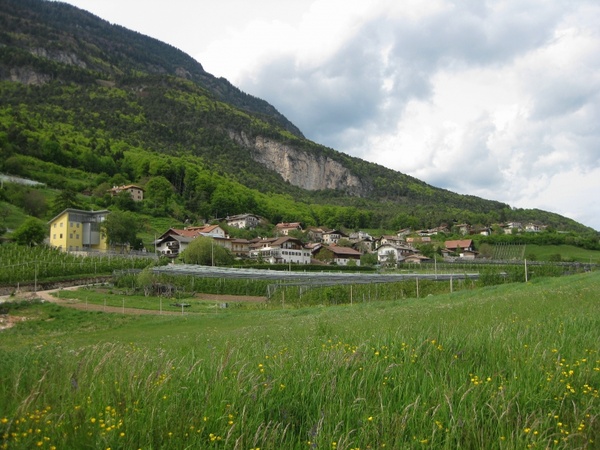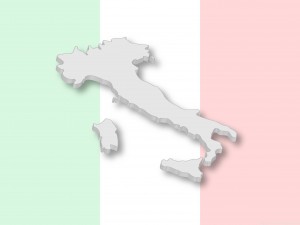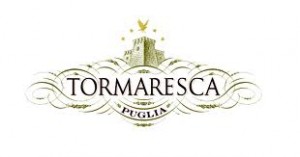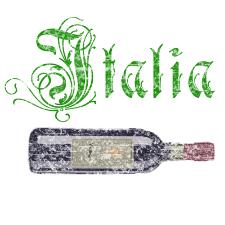
by Lorri | Feb 21, 2018 | UnCorked
Italy’s sparkling Prosecco has experienced a bit of a transformation in recent years. This bubbly has been plagued by inconsistent quality — from the top of the pyramid, Cartizze, to celebrities jumping on board to promote everything from canned Prosecco made in Austria to low-end fizz. Italians, who historically take their wine production very seriously, took notice and worked to address the problem head on.
The heart of Prosecco production is the Veneto region bordering the towns of Valdobbiadene and Conegliano. Recently, a new labeling change has brought more stringent production requirements within the Prosecco di Conegliano-Valdobbiadene zone. If the label has the name “Prosecco” it must adhere to specific production techniques and include only grapes grown in strictly controlled areas.
Italian wines are given levels of quality much like the French Appellation d’Origin Controlee. Beginning with the Vino da Tavola (basic table wine) to IGT, DOC and DOCG, each level has more stringent rules for growing and production. The change basically takes the areas previously given the lesser IGT designation a type of upgrade to DOC. To add to the confusion, it also technically renames the grape to its ancient name “glera” for producers outside of the named zones, effectively making “Prosecco” a place name and not a grape variety.
THE VALUES
- NV Zonin Prosecco, Italy (about $15 retail)
- NV Candoni Prosecco, Italy (about $15 retail)
THE SPLURGE
- NV Santa Margherita Brut Prosecco, Italy (about $25 retail)

by Lorri | Oct 28, 2015 | UnCorked
The grape variety barbera (bar-BEAR-uh) plays second fiddle to the more famous Barolo Italian grape. But over the last 20 years we’ve seen this grape receiving attention and Babera wines earn their place at the table. Once regarded as an ordinary everyday drinking wine, barbera grows around the world, but it is the vineyards of Italy’s Piedmont region that for centuries have produced the most concentrated and complex examples of this grape.
Here’s some trivia about this grape that makes for an interesting dinner conversation (at least for wine geeks). Barbera is thought to be nearly 1,000 years older than cabernet sauvignon. Researchers have found the grape can be traced as far back as the 7th century.
As with many a great dinner conversation, there is also a tale of scandal. A 1986 Time magazine article reported on a wine scare across Europe precipitated by the illegal use of wine additives. Eight Italians were found dead and more than 30 hospitalized after drinking Odore barbera. The wines were found to contain 5.7 percent methyl alcohol; the legal limit was 0.3 percent. Methyl alcohol is generally used in industrial applications including antifreeze, solvent and fuel. The scandal resulted in regulations that require all exported Italian wine to be carry a government certificate of purity.
Barbera can be refreshing in its youth with cherry and raspberry flavors or aged into a serious full-bodied style with a plummy spice taste. When made with care it can even deliver the undeniable “truffle” aromas and flavors reminiscent of the great wines of Piedmont.
This grape is often overlooked in food and wine pairing. As with most Italian grapes, its high acid content and soft tannins make it an almost perfect match with most foods.
THE VALUE
- 2014 Paolo Marcarino Piemonte Barbera, Italy (about $14 retail)
THE SPLURGE
- 2011 Michele Chiarlo Barbera D’Asti, Italy (about $21 retail)
by Lorri | Aug 14, 2013 | UnCorked
 Smaller than the state of California, Italy remains one of the world’s leading producers of wine, and is home to more native wine grapes than any other country. Italy is probably best known for its full-bodied reds, and considering many of us are looking for refreshing and zippy flavors as summer temperatures continue to rise, Italian wine (other than pinot grigio) is likely not our first thought.
Smaller than the state of California, Italy remains one of the world’s leading producers of wine, and is home to more native wine grapes than any other country. Italy is probably best known for its full-bodied reds, and considering many of us are looking for refreshing and zippy flavors as summer temperatures continue to rise, Italian wine (other than pinot grigio) is likely not our first thought.
We continue to be smitten with Italian pinot grigio but there are other bright, refreshing Italian superstars.
Soave is one of my favorites, for its relatively low alcohol content (usually around 12 percent) and light-bodied refreshing taste. Look for “Classico” on the label. This lets you know it was produced in the heartland using the traditional expression of the garganega grape. Italian law stipulates Soave must be a blend of 70 percent garganega and 30 percent blend of chardonnay, trebbiano di Soave and pinot blanc.
THE VALUE
- 2012 Re Midas Cantina Di Soave, Italy (about $10 retail)
THE SPLURGE
- 2012 Folonari Soave, Italy (about $13 retail)
Orvieto is made from the trebbiano grape. Usually an assortment of other Italian whites are added to the blend. In the past it was known as a sweetish style of wine using “noble rotten” grapes, but the more modern styles are generally dry. It is aromatic, with fresh lemony fruitiness and the occasional hint of almond.
THE VALUE
- 2011 Villa Antinori Orvieto, Italy (about $13 retail)
THE SPLURGE
- 2011 Argillae Orvieto DOC, Italy (about $18 retail)
Most consumers have never explored the refreshing taste of Gavi. This wine is another of my favorites, not only because of the excellent value but its ability to pair with almost any summer menu. Made from the cortese grape, it usually has a crisp acidity that can range from almost tart to mellow and citrusy.
THE VALUE
- 2012 Michele Chiarlo Gavi, Italy (about $22 retail)
THE SPLURGE
- 2012 Pio Cesare Cortesa Di Gavi (about $28 retail)
by Lorri | Apr 10, 2013 | UnCorked
 Located in the heel of southern Italy’s boot, Puglia (known as Apulia in English) is undergoing a renaissance in wine production. Unfamiliar to many wine drinkers, the region is proving to be a great source of well-made wines with amazing value. These are a few of my notes after a recent tasting of this gem of Italian wines.
Located in the heel of southern Italy’s boot, Puglia (known as Apulia in English) is undergoing a renaissance in wine production. Unfamiliar to many wine drinkers, the region is proving to be a great source of well-made wines with amazing value. These are a few of my notes after a recent tasting of this gem of Italian wines.
Tormaresca, the estate of the Antinori family in Puglia, means “Tower by the Sea.” The family has two properties in Puglia, one in the south named the Salento region and the other in the north, located in Castel del Monte. The Puglia region has a rich history of culture and gastronomy integrally linked to the sea.
The Antinori family built Tormaresca in 1998, with the goal of creating wines that would be the finest expression of the region’s viticulture. The family, whose winemaking roots date to the 14th century, hopes that by investing in this region and emphasizing the strength of the grapes growing naturally there, that the world will be reacquainted with the quality, integrity and consistency of the areas’ wines. Blending technological innovation with centuries-old vinification techniques, the Antinoris are providing a modern interpretation of vines as old as the land they grow on.
THE VALUE
- 2011 Tormaresca Neprica, Italy (about $12 retail)
At first glance of the label I thought I was going to taste a grape named Neprica I’d never tried. It turns out it isn’t the name of a single grape but an acronym for a blend of grapes. It’s from the first letters of each varietal: NEgroamaro (40 percent), PRImitivo, also known as zinfandel (30 percent), and CAbernet sauvignon (30 percent). Most of the grapes are familiar but Negroamaro is an indigenous grape. This trio makes for a robust red wine that pairs easily with food, like most Italian wines.THE SPLURGE
- Tormaresca Torcicoda IGT, Italy (about $22 retail)
Those who adore California zinfandel will be a huge fan of this wine. It’s 100 percent Primitivo and is layered with all the spices, fruits and full-bodied flavors you would expect. This grape has been growing in southern Italy for centuries.
by Lorri | Nov 9, 2011 | UnCorked
 Sangiovese, Nebbiolo and Barbera, despite their discreet natures, are sometimes called the “Italian Mob.” They earned this moniker because of their dominance in the Italian wine industry. Their hierarchy status rarely gets recognition on labels, and the wines take a back seat to the international familiarity of chardonnay and cabernet sauvignon. But these wines shouldn’t be ignored.
Sangiovese, Nebbiolo and Barbera, despite their discreet natures, are sometimes called the “Italian Mob.” They earned this moniker because of their dominance in the Italian wine industry. Their hierarchy status rarely gets recognition on labels, and the wines take a back seat to the international familiarity of chardonnay and cabernet sauvignon. But these wines shouldn’t be ignored.
Sangiovese has been associated with the inexpensive raffia-covered bottles sitting on restaurant tables around the world. But at its best, it is the grape behind Chianti from the Tuscany region.
These serious wines are brilliantly concentrated with earthy rich plum and black cherry, and because of their gripping tannins, they have the ability to age to perfection.
Nebbiolo, the famous grape behind the Barolo wine, is grown in Italy’s northwest region of Piedmont.
When compared to other grapes in this lineup, it is by far the most renowned for making aggressive, highly tannic red wines with alluring aromas and flavors — floral, roasted meats and spice.
Last but not least is the Barbera, which has played second fiddle to the Nebbiolo. Barbera grows throughout Italy, but it is in the vineyards of Piedmont that for centuries the most concentrated and complex examples of this grape have been grown. Its style can be fresh and fruity with cherry flavors or a full-bodied intense wine.
THE VALUES
- 2009 Cecchi Chianti Classico, Italy (about $15 retail)
- 2009 Da Vinci Chianti, Italy (about $21 retail)
- 2009 Michele Chiarlo Barbera d’ Asti, Italy (about $15 retail)
THE SPLURGES
- 2009 Santa Margherita Chianti, Italy (about $30 retail)
- 2009 Antinori Peppoli Chianti Classico, Italy (about $30 retail)


 Smaller than the state of California, Italy remains one of the world’s leading producers of wine, and is home to more native wine grapes than any other country. Italy is probably best known for its full-bodied reds, and considering many of us are looking for refreshing and zippy flavors as summer temperatures continue to rise, Italian wine (other than pinot grigio) is likely not our first thought.
Smaller than the state of California, Italy remains one of the world’s leading producers of wine, and is home to more native wine grapes than any other country. Italy is probably best known for its full-bodied reds, and considering many of us are looking for refreshing and zippy flavors as summer temperatures continue to rise, Italian wine (other than pinot grigio) is likely not our first thought. Located in the heel of southern Italy’s boot, Puglia (known as Apulia in English) is undergoing a renaissance in wine production. Unfamiliar to many wine drinkers, the region is proving to be a great source of well-made wines with amazing value. These are a few of my notes after a recent tasting of this gem of Italian wines.
Located in the heel of southern Italy’s boot, Puglia (known as Apulia in English) is undergoing a renaissance in wine production. Unfamiliar to many wine drinkers, the region is proving to be a great source of well-made wines with amazing value. These are a few of my notes after a recent tasting of this gem of Italian wines. Sangiovese, Nebbiolo and Barbera, despite their discreet natures, are sometimes called the “Italian Mob.” They earned this moniker because of their dominance in the Italian wine industry. Their hierarchy status rarely gets recognition on labels, and the wines take a back seat to the international familiarity of chardonnay and cabernet sauvignon. But these wines shouldn’t be ignored.
Sangiovese, Nebbiolo and Barbera, despite their discreet natures, are sometimes called the “Italian Mob.” They earned this moniker because of their dominance in the Italian wine industry. Their hierarchy status rarely gets recognition on labels, and the wines take a back seat to the international familiarity of chardonnay and cabernet sauvignon. But these wines shouldn’t be ignored.